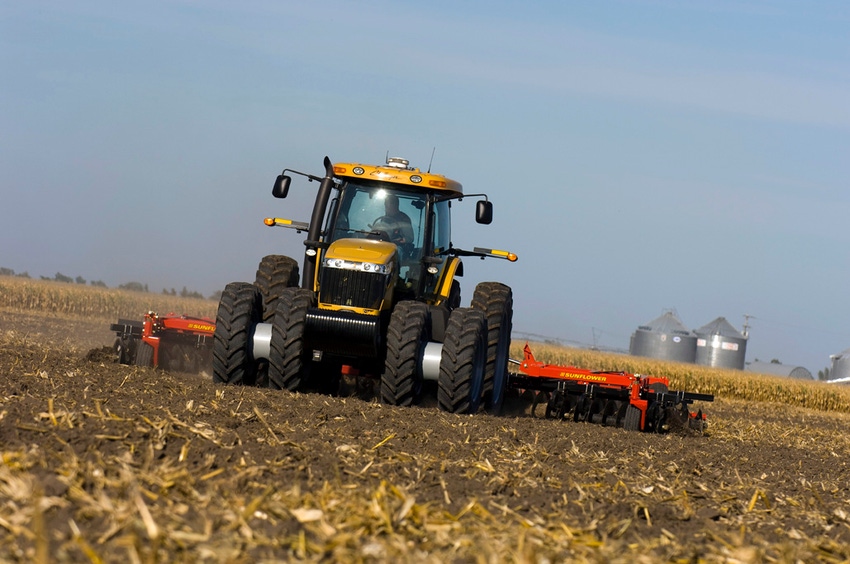January 31, 2011

There is a way to prevent injuries and fatalities on the farm and save millions of dollars, notes the American Society of Safety Engineers’ (ASSE) Agricultural Branch Administrator Michael Wolf. Tractor rollovers are the single deadliest type of injury incident on farms and it is reported that of the 4.7 million tractors in the U.S. today alone, one-half of them are without rollover protection for the operator. A tractor can turn over suddenly and if it is not equipped with a rollover protection structure (ROPS) and a seatbelt there is a good chance the tractor could crush the driver. ROPS are compartment structures (usually cabs or frames) intended to protect equipment operators from injuries caused by vehicle overturns.
“The most important safety feature missing on older tractors is rollover protection,” Wolf says. In addition to being a safety professional and ASSE Chesapeake Chapter president, Wolf and his family own and operate a small farm in Maryland. “Retrofitting older tractors with a ROPS creates a protective zone around the operator when a rollover occurs. When used with a seatbelt, which is recommended, the ROPS will prevent the operators from being thrown from the protective zone and crushed from an overturning tractor or from equipment mounted or hooked to the tractor.”
One thing unique to the agriculture industry, Wolf notes, is the fact that children are often present, either as part of the workforce, or in the case of younger children, the farm is their home and playground. ROPS not only helps protect farmers but the families who live, play and work on the farm.
“One of the most common causes of death and serious injury on farms is related to the heavy equipment required to run a farm,” Wolf adds. “We are currently working with local, regional and national 4-H outreach to help build awareness of the unique issues within the ag industry and to provide adequate training. This is an important international issue as well as emerging countries continue to grow and the demand for food continues to increase worldwide as does production.”
A high number of farming fatalities are due to tractor turnovers. According to the U.S. Bureau of Labor Statistics (BLS), the ag industry has the highest rate of occupational fatalities, about 32/100,000 employed people, or eight times the national average. In the Northeast alone, tractor incidents account for 55-60% of farm fatalities and up to 2/3 of those are due to overturns. Federal officials note that the elimination of overturn fatalities could result in more than $100 million in annual savings.
ROPS availability and cost
So where can famers turn to retrofit their tractor with a ROPS, and, what does it cost?
There are three types of ROPS frames available: a two-post frame, a four-post frame and an enclosed ROPS cab. There are even foldable ROPS available for tractors that are housed in smaller spaces. The cost runs around $765. Many programs have been developed to not only help farmers find ROPS, but also provide rebates to offset some of the cost. The Northeast Center for Agricultural and Occupational Health has a New York ROPS Rebate program that helps make the process of installing ROPS easier and affordable. It is now expanding to several northeastern states including Vermont, Pennsylvania and New Hampshire. In Virginia, Iowa and North Carolina, ROPS programs have been organized by state Farm Bureau chapters.
“We urge farmers to do this before growing seasons begin,” Wolf says. “We’re trying to get a retrofit rebate program in place here in Maryland. However, whether or not a ROPS rebate program is in place where they live, we urge farmers in the U.S., and around the world, to make sure their tractor has a ROPS and not only fitted with a seatbelt, but that they use that seat belt with the ROPS.”
National Ag Safety Database figures show that the use of ROPS and a seatbelt is estimated to be 99% effective in preventing death or serious injury in the event of a tractor rollover.
To prevent injuries and to enhance safety for farmers, children and their families, Wolf urges farmers have ROPS put on their tractors, use the seatbelt and make sure the new tractor they purchase is properly equipped with ROPS and a seatbelt.
Learn more information about agricultural safety and health and view ASSE’s farm safety facts for rural areas, farm safety and health tips and farm safety tips for young workers online.
You May Also Like




